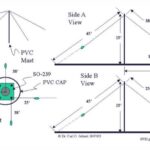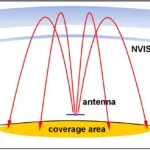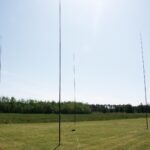Teaching children how to measure rainfall has several benefits, including:
- Hands-On Learning – It encourages practical engagement with science, making abstract weather concepts more tangible.
- Understanding Weather Patterns – Kids learn about precipitation, climate, and how rainfall affects their local environment.
- STEM Skills Development – It reinforces math (measuring, recording data, analyzing trends) and science (meteorology, water cycle).
- Environmental Awareness – Children gain an appreciation for the role of water in ecosystems and how weather impacts agriculture, reservoirs, and daily life.
- Critical Thinking & Observation – Recording and comparing rainfall data over time helps develop analytical skills.
- Encourages Responsibility – Maintaining a rain gauge and logging data teaches consistency and responsibility.
- Foundation for Citizen Science – Kids can contribute to real-world data collection, such as community weather tracking programs.
Materials needed:
- Rain Gauge: You can use a store-bought rain gauge or create a simple one using a clear plastic container, such as a jar or a soda bottle. A ruler or measuring tape will help too. If you want to build one, here is a good article.
- Marker: To mark measurements on the container.
- Notebook: For keeping track of the measurements.
Steps to Teach Kids:
- Introduce the Concept of a Rain Gauge:
- Explain that a rain gauge is used to measure how much rain falls from the sky.
- Show them a picture of a rain gauge or the actual one you’ll be using.
- Make a Simple Rain Gauge (if you don’t have one):
- Take a clear plastic container (like a soda bottle or jar).
- Cut the top off the bottle (if you’re using one), and invert it into the container to funnel the rain inside.
- Mark measurements on the side of the container using a ruler or measuring tape (e.g., in centimeters or inches).
- Place the rain gauge outside, where it can catch the rain but not be blocked by anything.
- Measure the Rain:
- After a rainstorm, take the container inside and look at how much rain has collected.
- Have the children read the measurement and record it in their notebooks.
- Discuss the Results:
- Ask questions like, “How much rain did we get today?” and “What does the measurement tell us about the weather?”
- You can compare the readings over different days and talk about how weather changes.
- Optional Activities:
- Create a Weather Chart: Record the rainfall each day over the course of a week to track changes in the weather.
- Rain and Weather Patterns: Explain how the amount of rain can affect the plants, animals, and even people in the area.
- Compare with Local Weather: If possible, compare the children’s measurements with a local weather forecast to show how professionals measure rain.
By using hands-on activities and incorporating measurement and weather knowledge, the children will learn not just how to measure rain but also gain a better understanding of nature and science. Does that sound good? Or would you like help with any specific part of the lesson?
Learn more about Weather here.
Tell us how can we improve this post?
Hi I am Marcus, MM0ZIF, a licenced Radio Amateur, Doctor of Musicology, amateur weather enthusiast. I over the years have been a Amateur Radio Tutor, Examiner, and a Regional Manager for the Radio Society of Great Britain.
This site is dedicated more towards Amateur Radio and Weather, with an angle on Technology too. I also maintain https://havenswell.com/ which is my other blog which is more aimed at cooking, hobbies and life in general as well as businness and networking.










